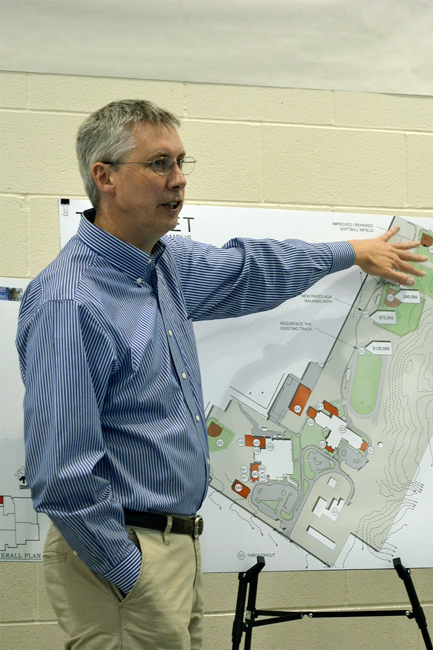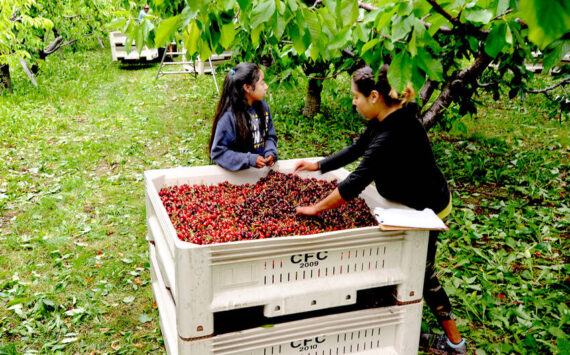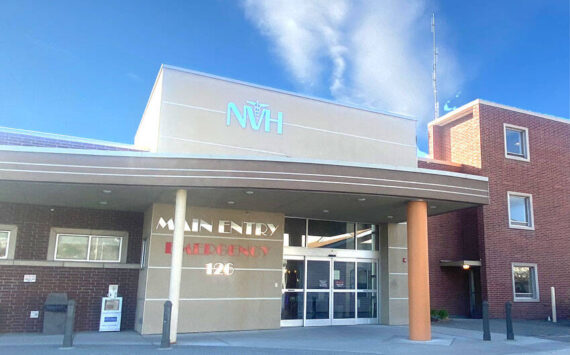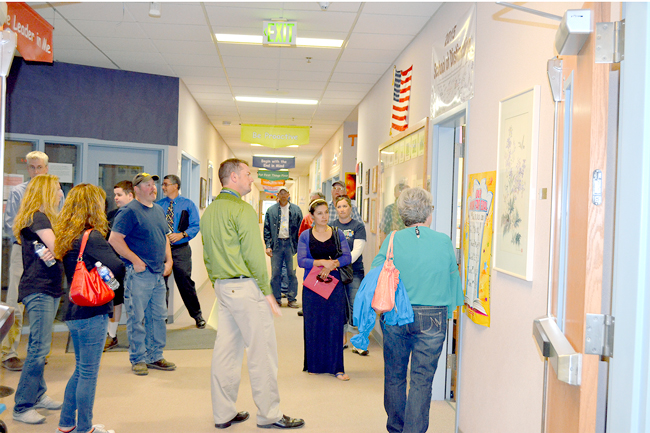
“We’re trying to make do the best we can. I have an entire wood turning business that is stored under benches because there is no room for it”
Matt Deback, Vo/Ag Teacher, Tonasket High School
TONASKET – A facilities/bond open house input session held Thursday, April 28, featured a facilities tour highlighting needs to be addressed in an upcoming bond.
The tour was led by Design West Architect Ned Warnick, who went over proposed improvements and associated costs with community members in attendance before walking them through the elementary school, high school shop area and the Alternative Learning (ALE) building housing the Tonasket Choice High School and Outreach programs before bringing the group back to the elementary school commons to brainstorm what to include in the bond package.
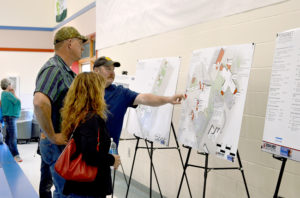
Tonasket residents discuss priorities to be addressed within the Tonasket School District in an upcoming bond during an open house and facilities tour Thursday, April 28. Voters will again have the opportunity to make suggestions at the next Bond Facilities Committee meeting May 26, at 5 p.m. in the TSD Board room. Katie Teachout/staff photo
The input session included an illustration of an option for just under $9 million, similar to the bond run in February that received around 57 percent approval, but needed 60 percent to pass. That bond addressed special education and preschool overcrowding, with the request for special ed additions and athletic event restrooms ($2,375,000) and music room sound isolation improvements ($25,000) in the elementary school. Needs identified in the middle school included three classrooms and a science lab in the upper level of a two-story addition ($2,125,000) and a gymnasium bleacher addition ($750,000). At the high school, a CTE/Vocational shop addition with a masonry and steel building addition ($1,125,000) would address the need for a wood shop and machine shop and allow the current classroom to become an Agriscience Laboratory ($125,000).
The Alternative Learning and Outreach Program (ALE) would be relocated from a portable building to an area below the middle school addition ($1,600,000).
District Security Upgrades of lock systems and security cameras would cost $225,000.
Upgrades to the Sports Complex would include a new disabled access path ($75,000), resurfacing of the track ($125,000), and supplies for baseball field ($100,000) and softball field ($75,000) repairs.
Warner said due to a state wide mandate reducing K-3rd grade class sizes, options two and three address the need for extra classrooms.
Option Two, totaling almost $11 million, includes everything in the first option, as well as additional classrooms for class size reduction and enrollment increases at a cost of $2,075,000.
Option Three, at a cost of just under $15 million, includes almost everything in the first two; except instead of the middle school options listed previously, three classrooms with a science lab addition would be housed in the upper level of the middle school gym, the ALE housed in the lower level ($1,600,000) with a new, stand alone middle school and community gymnasium ($3,825,000). This option includes a CTE/Skills Center addition to the high school ($1,025,000) and a relocation of the softball field to the west field and realignment of the soccer and baseball fields ($375,000).
“Our goal is to get input and understand where we are at and what’s the right kind of bond to run in 2018,” said Warner, adding, “This is not an either/or decision to support the Alternative Learning program or Ag Shop.”
In touring the elementary school, Principal Jeremy Clark pointed out a small space formerly referred to as a broom closet converted into an office for two parapros; and the Special Ed Resource Room now filling a space that used to be a storage area at the back of the library. Resource Room teacher Christine Taylor said when the room has as many as fifteen people in it at the same time, “you have to really watch before you step back.”
Clark said the preschool program had to be moved to a smaller room, so they needed to reduce the developmental preschool enrollment and house the elementary school Life Skills students in the middle school. A hallway with a door to the playground was turned into a miniature reading specialist room, with the door blocked off by the teacher’s desk.
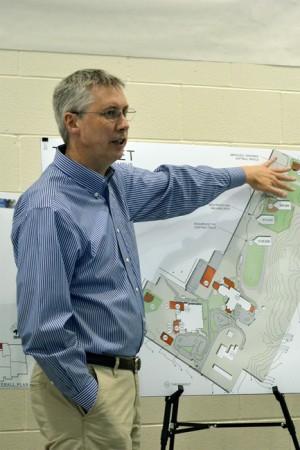
At the high school, vocational/agriculture teacher Matt Deebach said his most immediate need was a space for an agriscience lab.
“Most shops have those; we do some meat processing and everything needs disinfected inbetween because it’s done right here in the classroom,” said Deebach, adding that with no room for a separate wood or machine shop, “We’re trying to make do the best we can.” Deebach said the community’s generous donations of tooling items have had to be turned down. “I have an entire wood turning business that is stored under benches because there is no room for it,” said Deebach. “It’s probably a $10,000 to $15,000 donation, so I didn’t want to turn it down.”
A tour of the shop space revealed cramped spaces where an average of 28 students would be working on various projects at the same time, with some students arc welding and others working on engines. Deebach said what he was hoping for was a practical extended shop with two bays.
A trip to the portable building housing the Tonasket Choice High School and Outreach Program (ALE) revealed more cramped spaces inside the dilapidated building that came from the Omak Stampede grounds in the mid-1970s and used to house the fifth grade. The building is heavily used, with 50 Outreach students and 32 enrolled in the Choice program. Outreach Program Director Andy Jones said there was just one room that actually looked like a classroom which, among many uses, was a meeting place for family members and students to check in at least once a week.
“Even though there is a lot of community interest and families wanting to participate in the Outreach program, we are limited due to space,” said Jones.
At the middle school, the gymnasium with no room to pull bleachers out further than three benches wide was visited. Basketball coach and maintenance and grounds worker Mike Larson said the gymnasium was four feet shy of regulation size at 80 feet and a little too narrow.
“In practices in there with 35 kids the last 21 years, we have been able to manage, but during competitions you can’t fit the home team spectators, much less the visiting teams,” said Larson. “During the game against Omak we had 150 spectators crowded in there.”
Back in the commons, concerned voters batted around solutions to issues witnessed with programs being conducted in spaces not designed for them, and deliberated on which bond package to run.
To participate in the bond questionnaire, go to http://goo.gl/forms/YGDgKrksGK
